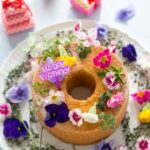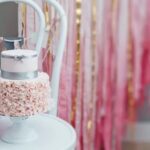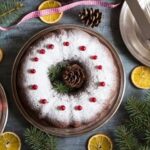Are you looking to elevate your cake decorating skills and create unique and personalized designs? In this article, we will explore the process of making molds for cake decorating, providing you with the knowledge and tools to enhance your creative abilities. From understanding the importance of custom molds to troubleshooting common mold making issues, this comprehensive guide will equip you with the skills needed to take your cake decorating to the next level.
When it comes to cake decorating, having custom molds can make a significant impact on the finished product. Whether you are creating intricate patterns or themed cake decorations, having the ability to customize your molds allows for endless possibilities. In this section, we will delve into the types of molds available for cake decorating, essential materials needed for mold making, and a step-by-step guide on how to create your own custom molds.
Exploring different types of molds such as silicon, plastic, and metal will provide insight into their uses and benefits for cake decorating. Additionally, understanding the materials needed for making molds such as molding putty, silicone rubber, and modeling clay is crucial for successful mold making.
By following a detailed guide and learning insider tips and tricks, you will be able to create homemade molds that are cost-effective and tailored to your specific design needs. So let’s get started on your journey to mastering the art of mold making for cake decorating.
Types of Molds for Cake Decorating
When it comes to cake decorating, having the right molds can make a significant impact on the finished product. There are several types of molds available for cake decorating, each with its own unique uses and benefits. Understanding the differences between silicon, plastic, and metal molds can help you choose the best option for your specific cake decorating needs.
Silicon molds are popular among cake decorators due to their flexibility and durability. These molds can easily be bent or twisted to release the finished design, making them ideal for intricate and detailed cake decorations. They are also non-stick, allowing for easy removal of the cake decorations without any damage.
Plastic molds are another common choice for cake decorating. They come in a variety of shapes and sizes, making them versatile for creating different designs. Plastic molds are also lightweight and easy to clean, making them a practical option for both beginner and experienced cake decorators. Additionally, they are often more affordable than other types of molds, making them a budget-friendly choice for those just starting out in cake decorating.
Metal molds offer durability and stability, making them suitable for creating larger or more complex cake decorations. They can withstand higher temperatures, making them ideal for use with fondant or gum paste in intricate designs that require precision and structure. While metal molds may require greasing before use to prevent sticking, they are known for their longevity and ability to create professional-looking cake decorations.
No matter which type of mold you choose, understanding their unique features and benefits will help you make an informed decision when it comes to selecting the right molds for your cake decorating projects.
| Mold Type | Characteristics |
|---|---|
| Silicon | Flexible, durable, non-stick |
| Plastic | Versatile, lightweight, affordable |
| Metal | Durable,sturdy,long-lasting |
Materials Needed for Making Molds
When it comes to creating custom molds for cake decorating, having the right materials is crucial. Whether you are looking to make molds for intricate designs, shapes, or patterns, there are several essential materials needed for successful mold making. Molding putty is a popular choice for making molds due to its flexibility and ease of use.
It easily captures fine details and can be used multiple times without losing its effectiveness. Silicone rubber is another key material that is commonly used in mold making for cake decorating. Its durability and ability to withstand high temperatures make it ideal for creating long-lasting molds that can be reused for various baking projects.
Along with molding putty and silicone rubber, modeling clay is also an important material needed to create custom molds for cake decorating. Modeling clay allows for the creation of prototypes and original designs that can then be used to make the final mold. It provides a great way to visualize the end result and make any necessary adjustments before moving on to the next steps of mold making.
In addition to these essential materials, having access to tools such as sculpting tools, cutting implements, and release agents will further aid in the mold making process. These tools help ensure that the molds are free from imperfections and that they release easily from the cake decorations once they have set. Properly sourcing and using these materials will ultimately lead to successful mold making, allowing decorators to bring their creative visions to life in stunning edible creations.
| Material | Usage |
|---|---|
| Molding Putty | Flexibility for capturing fine details |
| Silicone Rubber | Durability and high-temperature resistance |
| Modeling Clay | Creativity in prototyping and design visualization |
Step-by-Step Guide to Making Molds
Making molds for cake decorating is a fun and creative way to add unique and personalized touches to your baked creations. Whether you’re looking to create intricate designs or replicate specific shapes, custom molds can elevate the overall look of your cakes. In this step-by-step guide, we will walk you through the process of making molds for cake decorating, along with some tips for achieving detailed and precise designs.
Gather Your Materials
Before you begin making molds for cake decorating, it’s important to gather all the necessary materials. You will need molding putty or silicone rubber, modeling clay, a mixing bowl, sculpting tools, and the object or design you wish to mold. Ensure that your work area is clean and free from any debris that could affect the mold-making process.
Create Your Mold
Start by preparing your modeling clay and shaping it into a base for your mold. Place the object or design you want to replicate onto the clay base. Then, carefully mix the molding putty or silicone rubber according to the manufacturer’s instructions. Once mixed, slowly pour the mixture over the object on the clay base, ensuring that it covers the entire surface evenly.
Remove and Use Your Mold
Allow the mold material to cure according to the recommended time frame. Once fully cured, carefully remove the original object from the mold. You can now use your custom mold for cake decorating by pressing fondant or gum paste into it to create beautiful decorations for your cakes.
By following these steps and experimenting with different designs and objects, you can create unique molds for cake decorating that will take your confectionery creations to new heights. Happy molding.
Tips and Tricks for Successful Mold Making
Making molds for cake decorating can take your confectionery creations to the next level, allowing you to craft intricate designs and add personalized touches to your cakes. While the process may seem daunting at first, with the right tips and tricks, you can ensure successful mold making for cake decorating. Here are some insider insights on how to make molds for cake decorating:
- Choose the Right Materials: Selecting the appropriate molding materials is crucial for successful mold making. Whether you opt for silicone rubber, molding putty, or modeling clay, ensuring that the material is compatible with your design and easy to work with will set the stage for a smooth mold-making process.
- Precise Design Techniques: When creating custom molds for cake decorating, precision is key. Use sculpting tools and other modeling instruments to achieve clean and precise designs in your mold materials. Pay close attention to intricate details to ensure that your finished molds capture every nuance of your desired pattern or shape.
- Proper Handling of Materials: Properly mixing and handling mold materials is essential for achieving high-quality results when making molds for cake decorating. Follow manufacturer instructions carefully, measuring out components accurately and ensuring thorough mixing to avoid any imperfections in your molds.
By following these tips and tricks for successful mold making, you can elevate your cake decorating skills and create stunning, custom-designed cakes that are sure to impress. With precision, proper handling of materials, and attention to detail, you can master the art of mold making for cake decorating.
Remember that practice makes perfect when it comes to creating molds for cake decorating. Experiment with different materials and designs, honing your skills over time as you discover what works best for your unique creations. With dedication and creativity, you’ll soon be crafting beautiful custom molds that will take your cake decorating endeavors to new heights.
Using Homemade Molds for Cake Decorating
Cost-Effectiveness
One of the key benefits of using homemade molds for cake decorating is the cost-effectiveness. Purchasing pre-made molds can add up over time, especially if you require a variety of shapes and sizes for different projects. By making your own molds, you can save money in the long run and invest in high-quality materials that will last for multiple uses. This cost-effective approach allows you to expand your mold collection without breaking the bank.
Customization
Homemade molds also offer the advantage of customization. With store-bought molds, you are limited to the designs and sizes available on the market. However, by creating your own molds, you have complete control over the shapes and patterns that you want to incorporate into your cake designs. Whether it’s replicating intricate details or personalizing designs for specific occasions, homemade molds empower decorators to bring their unique vision to life.
Unleashing Creativity
In addition to cost-effectiveness and customization, using homemade molds for cake decorating allows decorators to unleash their creativity. The process of making custom molds opens up endless possibilities for experimenting with new techniques, designs, and textures. From creating elaborate floral patterns to crafting themed decorations, homemade molds provide decorators with the freedom to explore their artistic abilities and push boundaries in cake decorating.
By understanding how to make molds for cake decorating at home, individuals can unleash their creativity while reaping the benefits of cost-effectiveness and customization in their baking endeavors. Whether it’s experimenting with new designs or tackling challenging projects, using homemade molds opens up a world of possibilities for creating stunning and personalized cakes that leave a lasting impression on every occasion.
Troubleshooting Common Mold Making Issues
As you embark on the journey of making molds for cake decorating, it’s important to be prepared for potential issues that may arise during the mold making process. Common problems such as air bubbles and uneven surfaces can impact the quality of your molds and ultimately affect the finished cake decorations. However, with the right knowledge and techniques, these issues can be effectively addressed and overcome.
Here are some tips and tricks for troubleshooting common mold making issues:
- Air Bubbles: One of the most common issues when making molds is the presence of air bubbles, which can create imperfections in your mold. To prevent this, carefully mix your molding material according to the manufacturer’s instructions and pour it slowly into your mold to minimize air entrapment. You can also use a vibrating table or gently tap the mold to help release any trapped air bubbles.
- Uneven Surfaces: Uneven surfaces in your molds can result in distorted or incomplete shapes when using them for cake decorating. To avoid this, make sure that your mold box is level and properly secured before pouring your molding material. You can also use a leveling tool to ensure an even surface or apply additional layers of molding material to build up any areas that are too shallow.
- Misalignment: When creating molds with multiple pieces or complex designs, misalignment can occur, leading to inaccuracies in your final mold. Take extra care when assembling multi-piece molds, ensuring that each component fits together snugly and securely. Use registration marks or keys to ensure proper alignment and avoid any shifting during the molding process.
By being mindful of these common mold making issues and implementing these troubleshooting solutions, you can improve the overall quality of your custom molds for cake decorating. With practice and attention to detail, you’ll be able to create flawless molds that will enhance your cake decorations and unleash your creativity.
Remember that patience is key when dealing with mold making issues – take your time to identify potential problems and address them accordingly in order to achieve perfect results with your homemade molds for cake decorating.
Ultimately, by understanding how to make molds for cake decorating and effectively troubleshooting common issues, you’ll be well-equipped to create stunning, professional-quality cake decorations that showcase your unique style and creativity.
Inspiration for Using Custom Molds in Cake Decorating
Crafting custom molds for cake decorating opens up a world of creativity and possibilities. When it comes to using these custom molds, the options are limitless. One popular way to use custom molds in cake decorating is by creating stunning floral designs.
From delicate roses to blooming daisies, custom molds make it easy to add intricate floral details to cakes, cupcakes, and other confections. By using different colors and textures, decorators can bring these fondant or gum paste flowers to life, adding a touch of elegance and beauty to their creations.
In addition to floral designs, custom molds can be used to create intricate patterns on cakes and other sweet treats. Whether it’s a geometric design for a modern look or a lace-like pattern for a more romantic feel, custom molds allow decorators to easily transfer complex designs onto their cakes. This level of detail adds sophistication and visual interest to the finished product, making it stand out from traditional decorations made by hand.
Furthermore, themed cake decorations can also be easily achieved with the help of custom molds. Whether it’s for a birthday party, wedding celebration, or holiday event, customized molds allow decorators to replicate popular symbols and icons with ease. From adorable animal shapes for children’s birthdays to festive holiday motifs, the ability to create personalized themed cake decorations adds an extra layer of fun and excitement to any special occasion.
Overall, the use of custom molds in cake decorating offers endless possibilities for creativity and innovation. By incorporating floral designs, intricate patterns, and themed cake decorations into their work, decorators can elevate their creations with unique and personalized touches that are sure to impress clients and guests alike. The key lies in understanding how to make molds for cake decorating effectively and experimenting with different techniques and designs to achieve stunning results.
Conclusion
In conclusion, making molds for cake decorating can significantly enhance the quality and creativity of cake designs. Custom molds offer the opportunity to create unique and personalized cake decorations that are not easily achievable with pre-made molds. By understanding the different types of molds available, along with the essential materials and step-by-step guide for making molds, individuals can unleash their creativity and experiment with various designs and shapes for their cakes.
With homemade molds, decorators have the freedom to customize their creations according to their preferences and themes. The ability to troubleshoot common mold making issues will also empower decorators to achieve clean and precise designs. Additionally, by utilizing homemade molds for cake decorating, individuals can save on costs while achieving a higher level of customization.
It is important for aspiring cake decorators to embrace the process of mold making as an opportunity to explore their creativity. By venturing into mold making, decorators can transform regular cakes into stunning works of art, showcasing intricate patterns, themed decorations, and unique designs that reflect their personal style and imagination. Ultimately, by encouraging readers to delve into mold making for cake decorating, they can unlock endless possibilities for creating show-stopping cakes that are truly one-of-a-kind.
Frequently Asked Questions
How Do I Make a Silicone Mold?
Making a silicone mold involves creating a model of the desired object, then mixing and pouring liquid silicone over it. The silicone is then left to cure and set before removing the original object.
How Do You Make a Silicone Mold for Baking?
To make a silicone mold for baking, you can use food-grade silicone putty or liquid silicone to create a mold of the baking pan or an object to be used in baking. Follow the instructions on the silicone product for best results.
How Do You Keep a Cake From Sticking to a Silicone Mould?
To prevent a cake from sticking to a silicone mold, it’s important to properly grease or butter the mold before pouring in the batter. Additionally, allowing the cake to cool completely before attempting to remove it from the mold can help prevent sticking.

Welcome to my blog about home and family. This blog is a place where I will share my thoughts, ideas, and experiences related to these important topics. I am a stay-at-home mom with two young children. I hope you enjoy reading it! and may find some helpful tips and ideas that will make your home and family life even better!





